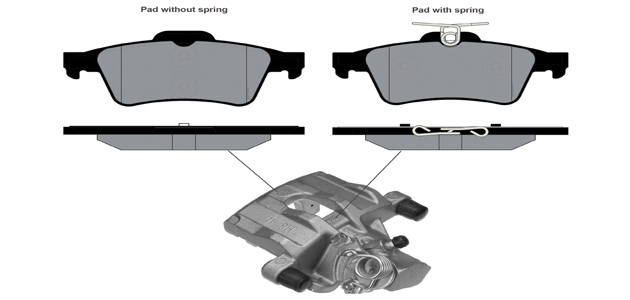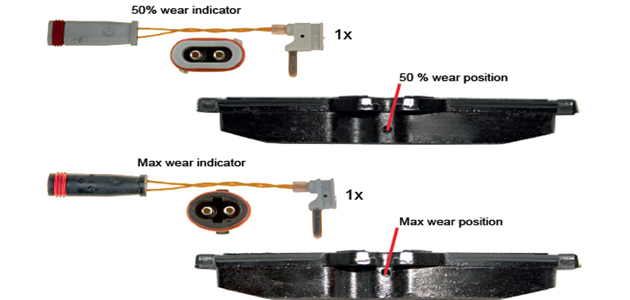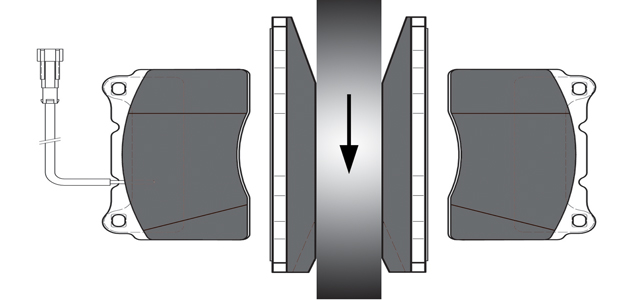
Q. Is there a right and wrong way to fit brake pads that have a pad spring fitted to the top of the pad as opposed to those without?
A. Most definitely yes! If you have a set of four pads – two with springs and two without – it is important that the brake pads with the spring are mounted on the inbound side next to the piston side of the brake calliper. This is to ensure the most efficient function of the brake pads.
Fitting the brake pads on the wrong side leads to noise, increased wear and possibly reduced brake performance. TRW goes to extreme lengths in product testing to ensure its brake pads give optimum performance with no noise.

Position of brake pad with spring
Q. Some of the pads we get from TRW have two types of wear indicator cables and two pads with holes drilled in different locations to accommodate them (for example: your pads GDB1542). Is there a reason for this?
A. Firstly, this is exactly the same set up as the OE system; TRW always follows OE specifications. One pad has a hole which is for 50% wear indication. If the disc comes into contact with this sensor, the pad wear has reached 50%. This information will be stored in the ECU, however the driver will not receive an indication.

The other pad has a drilled hole for maximum wear indication. When the indicator fitted here comes into contact with the disc, the pad has reached the preset maximum wear limit, and a warning light in the vehicle instrument panel will be illuminated constantly. The pads will then need to be changed as soon as possible.
Note: the indicators have different plugs to prevent them from being connected incorrectly.
Q. If a brake pad only has a chamfer on one edge, which way round should it be fitted?
A. The general rule of thumb is that the chamfer should be the leading edge of the pad in relation to the forward rotation of the disc. The chamfer is there to minimise noise, and if fitted the wrong way round, you will most certainly suffer from undue brake noise. TRW also has a directional arrow on its brake pads with chamfers to indicate the forward rotation of the disc to aid correct fitment.

Pad with chamfer
After more technical advice? Find out what causes ‘brake judder’ by clicking here









